A trip to the ABC islands, naturally includes the scenic island of Bonaire famous for its coral beaches, delectable food and distinctive culture.
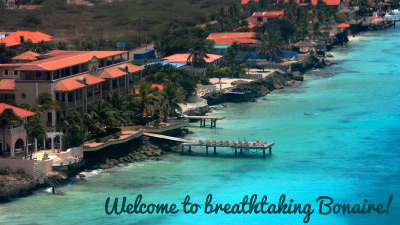
Bonaire is a tiny island in the southern Caribbean Sea. With Venezuela just 50 miles away, Bonaire along with Aruba and Curacao make up the ABC islands.
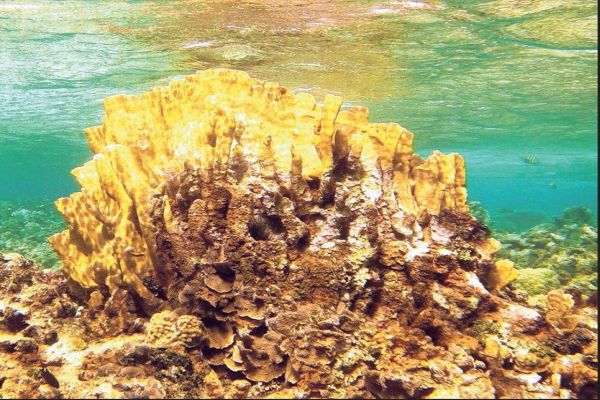
Landform
The volcanic activity caused by the earth’s plate collision pushed up a landmass about 90 million years ago. This land was made up of volcanic rocks as well as corals. Once this reef came in contact with air, the corals died and left behind limestone sediment. Also, as the land moved upwards, fringing coral reefs started forming in the shallow waters starting at the shore. These reefs surrounded the rising island. Air and wind erosion over millions of years flattened Bonaire’s land.
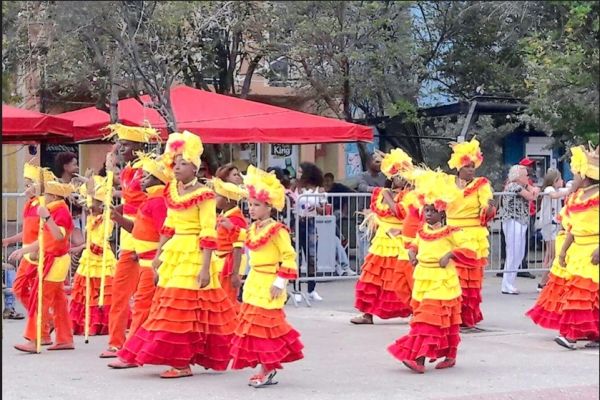
Culture
Early occupants of Bonaire were Caquetio, originally from Venezuela. The proof of their existence lies in the Caquetio rock paintings and their archeological relics that are present till date. The earliest colonisers of Bonaire were the Spaniards in 1499. But in 1636, the Dutch gained the upper hand. Between 1799-1816, independent people as well as different countries gained control of the island. Finally, in 1816, Bonaire was handed over to the Dutch. Bonaire was part of the Netherlands Antilles till 2010. From then on, the government of the Netherlands took over the governance of Bonaire from the dissolved government of Netherlands Antilles. Dutch is the official language of Bonaire but it is Creole that is widely spoken. English and Spanish are also spoken. Fine arts, performance arts as well as poetry are part of its culture. One can buy handcrafted pieces and paintings from local shops. Known to create musical instruments, this island boasts of the “Bari” and “Chapi” instruments. If polka dance came from Europe then Merengue was from northern Caribbean islands. Sports in Bonaire are football, tennis, baseball, windsurfing, athletics and volleyball.

Cuisine
Like in the Aruba Island, people in Bonaire consume a lot of stews. Stoba (stew) along with kabrito (goat), baka (beef) or galina (chicken) is cooked for hours so that the meat gets softened. In an island, fish is an integral part of the diet. So you have piska krioyo — where piska is fish that is either pan fried or grilled and served with a spicy home made tomato sauce. Like Aruba, funchi is a side dish made of cornmeal and served with stobas. As plantains grow in plenty in the Caribbean, banana hasa is popular in Bonaire where the plantain is baked in oil and served as a side dish. Lastly, Bonairean cuisine is incomplete without a mention of its popular delicacy; sopi di yuana. This dish is a soup made of iguana, vegetables, chicken broth and spices.
Get your own planner to jot down all the activities you need to tick-off before the New Year begins. Learn a new language along the way.

A flame that is fireless? Curiouser and curiouser… Well, do this fun experiment to find out that this is indeed reality, and not a figment of your imagination.
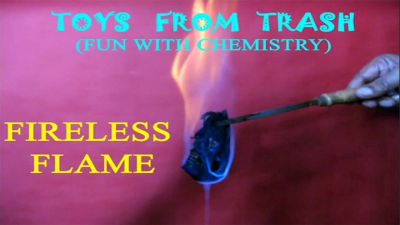
Two hundred years after Mary Shelley brought out her masterpiece, the book continues to give us food for thought. Read on about the famous man-made monster that came to life…
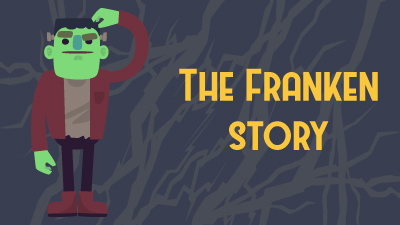
It was a dark and rainy night. Four people sat around a fire telling ghost stories. One of them suggested that they each write a ghost story. The only woman in the group worried about the challenge till lying in bed one night she saw an image that inspired her to write her story.
The young woman was Mary Shelley and the year was 1816. Shelley was in Geneva with poets Percy Shelley and Lord
Byron. Although Shelley meant to write a story for the competition, she ended up writing a novel. The novel, titled
Frankenstein , was published anonymously in 1818. It was only later that the world learnt the name of the creator of this disturbing tale.
A horrific creation
Frankenstein is the story of Victor Frankenstein and his obsession with creating life. He sews various body parts to create a creature, and infuses life into it. But the first sight of his creation horrifies Frankenstein. He understands the enormity of what he has done and runs away.
The creature is gone when he returns and for a while Frankenstein is happy.The creature tries to befriend humans
but realising that its appearance horrifies people, stays in hiding. Tired of this lonely life, the creature begs Frankenstein for a companion. Frankenstein, himself on the verge of getting married, agrees to do this. Minutes before infusing life into it, however, Frankenstein realises the danger of unleashing another monster on the world and destroys it. This angers the creature and he vows revenge. The creature follows Frankenstein and kills his newlywed wife, and later, his friend. Frankenstein’s father dies of shock. All alone now, Frankenstein sets out to destroy the monster he has created and make the world a safe place. He follows the monster to the North Pole but dies there. The monster understands that with the death of its creator it is doomed to a lonely, hopeless existence and declares that death is its only option now.
The book, considered an early example of science fiction, has inspired many adaptations for the silver screen. The phrase ‘Frankenstein’s monster’ is today used to refer to something that becomes dangerous to its maker.
Frankenstein is a thought-provoking book and forces readers to wonder — who is the real monster? The creature
or his creator? And this is perhaps the secret of this novel’s continuing popularity, 200 years after it was first published.
There’s a nip in the air, and the nights are long and pleasant. An ideal time to go caroling. Sing along and figure out whether these statements are true or false.

Carols were first sung in Europe thousands of years ago, but they were not for Christmas. They were songs, sung at the Winter Solstice celebrations as people danced round stone circles. The word carol actually means dance or a song of praise and joy. Carols were written and sung at the change of the the seasons. Over time, the custom lost lustre with only the tradition of singing them at Christmas continuing.
Here are some popular carols. How familiar are you with them?
It is essential that one remains fit. The gym for one has many machines and equipment. How familiar are you with them?
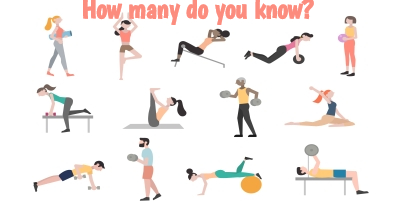
Regular physical activity helps us with growth and development. It also helps us build strong bones and muscles and maintain and develop flexibility. Exercise also helps you achieve and maintain a healthy weight. Let’s take a look at how well you know your gym.
This week we take a tour around the world to find out what’s been happening.

There is a lot happening around the world, with U.S. President Donald Trump planning a trilateral meeting with Prime Minister Narendra Modi and Japanese Prime Minister Shinzo Abe on the sidelines of the G20 summit in Buenos Aires on November 30 and December 1; an explosion outside a chemical plant in northeastern China that has killed at least 22 people and destroyed scores of vehicles; and a commercial pilot fell asleep in the cockpit of his freight plane causing him to overfly his Australian island destination by 46 km.
For more news, click on the hotspots.
November 28th marked the beginning of the 2018 Men’s Hockey World Cup. Find out some fascinating facts about the tournament with this video.

Jumbo is all I have ever asked for in a friend. I stay tall and proud and have nothing to fear. Colour us up to see how happy we can be.

Ancient Rome was a powerful civilization that ruled much of Europe for 1000 years. Get to know more as you try solving this shuffle puzzle.
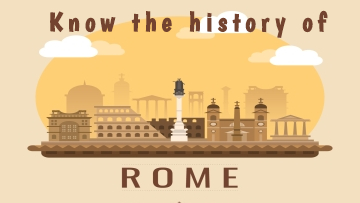
The Roman Empire was among the most powerful economic, cultural, political and military forces in the world of its time. It was one of the largest empires in world history. It’s influence was so great, that even today its precepts continue to be followed in Europe.
Here are some jumbled images of monuments in Rome. Can you unravel them? Pick a difficulty level under ‘Shuffle’, choose the size of the ‘Grid’, and get going!
The Roman Empire
In 45 BC Julius Caesar took over the Roman Republic and made himself the supreme dictator. This was the end of the Republic. Then, in 27 BC, Caesar Augustus became the first Roman Emperor establishing the Roman Empire. The Roman Forum is a rectangular forum surrounded by the ruins of several important ancient government buildings at the center of the city of Rome.
The Colosseum
It is a giant amphitheater in the center of Rome, Italy. The construction on the Colosseum was started in 72 AD by Emperor Vespasian. It was completed eight years later. It could seat 50,000 people and covers around six acres, is 620 feet long, 512 feet wide, and 158 feet tall. It took more than 1.1 million tons of concrete, stone, and bricks to complete the structure.
Roman Baths
Every Roman city had a public bath where people came to bathe and socialise. The public bath was something like a community center where people worked out, relaxed, and met friends. The main purpose of the baths was a way for the Romans to clean themselves. Most Romans living in the city tried to get to the baths at least once a day.
The baths were also a place for socialising. Sometimes men would hold business meetings or discuss politics.












